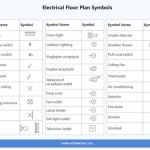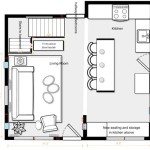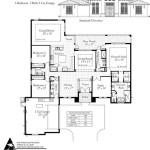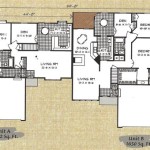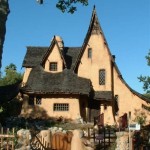Squirrel House Plans: A Comprehensive Guide to Building Your Own
Squirrels, with their playful antics and bushy tails, are a common sight in many backyards. Providing them with a safe and secure shelter can enhance their well-being and provide backyard entertainment for nature enthusiasts. Building a squirrel house, also known as a drey or squirrel box, is a relatively simple project that can be accomplished with basic tools and materials. This guide will explore various aspects of squirrel house plans, from design considerations to construction tips and placement strategies.
Key Design Considerations
Several factors contribute to a successful squirrel house design. These considerations ensure the structure provides adequate protection and encourages squirrel habitation.
- Size: A typical squirrel house should be approximately 10-12 inches wide, 8-10 inches deep, and 12-15 inches tall. Slightly larger or smaller dimensions can be used based on the size of the squirrels in the specific area.
- Entrance Hole: The entrance hole is crucial for preventing predators from entering while allowing squirrels easy access. A diameter of 3 inches is generally recommended.
- Ventilation: Proper ventilation is essential for preventing moisture buildup and maintaining a healthy environment within the house. Drill several small holes (about ¼ inch diameter) in the sides and back of the box for air circulation.
- Drainage: To prevent water from accumulating inside, ensure the bottom of the house has drainage holes. These holes should be small enough to prevent nesting materials from falling out.
- Materials: Untreated wood, such as cedar or pine, is the preferred material for squirrel houses. Avoid using treated lumber, as the chemicals can be harmful to squirrels.
Choosing the Right Plan
Numerous squirrel house plans are available online and in woodworking books. Selecting a plan that suits individual skill levels and available resources is important.
- Simple Box Design: This design is ideal for beginners and requires minimal woodworking experience. It involves constructing a basic box with an entrance hole and ventilation holes.
- Multi-Chamber Design: A multi-chamber design offers more space and can accommodate a larger squirrel family. This plan is slightly more complex but provides enhanced functionality.
- Platform Design: A platform design incorporates a landing area outside the entrance hole, making it easier for squirrels to enter and exit.
Building Your Squirrel House
Once a plan is selected, gather the necessary materials and tools. Accurate measurements and precise cuts are crucial for a well-constructed house.
- Cutting the Wood: Cut the wood pieces according to the chosen plan’s dimensions. Ensure accurate cuts to ensure proper assembly.
- Assembly: Assemble the box using wood screws or nails. Ensure all joints are secure and tight.
- Adding the Entrance Hole: Use a hole saw or jigsaw to create the entrance hole. Sand the edges smooth to prevent injury to the squirrels.
- Drilling Ventilation and Drainage Holes: Drill several small holes for ventilation and drainage as previously outlined.
- Finishing Touches: Adding a sloped roof can help shed water. A hinged roof or removable panel can facilitate cleaning.
Placement and Installation
Strategic placement of the squirrel house is vital for attracting squirrels and ensuring their safety.
- Height: Mount the house at least 10-15 feet above the ground on a tree trunk or sturdy branch. This height provides protection from predators.
- Location: Choose a location that provides shade and protection from the elements. Orient the entrance hole away from prevailing winds.
- Mounting: Use strong screws or brackets to securely attach the house to the tree. Avoid nails, as they can damage the tree.
- Nesting Material: While squirrels will gather their own nesting material, providing some dry leaves, shredded paper, or natural fibers inside the house can encourage them to move in.
Maintenance and Care
Regular maintenance will ensure the longevity of the squirrel house and provide a healthy environment for the inhabitants.
- Cleaning: Clean the house once a year, ideally in the late fall or early winter after the squirrels have raised their young. Remove old nesting material and debris.
- Repairs: Inspect the house for any damage and make necessary repairs. Replace any rotten or damaged wood.
- Predator Prevention: Check for signs of predator activity and take appropriate measures to deter them. Metal flashing around the base of the tree can prevent climbing predators from reaching the house.
Building a squirrel house can be a rewarding experience, providing a valuable habitat for these fascinating creatures while enhancing the natural beauty of any backyard. By following these guidelines and choosing a suitable plan, individuals can create a welcoming and safe environment for squirrels to thrive.

Pin On Houses For Squirrels

Kevin S Birdhouse Squirrel Box Plans

Squirrel Home Plans Labels Flying Squirrels

1000 Images About Squirrel Houses On Bird House Plans Feeder

A Mazing Squirrel House Plan Work Supply

Squirrel Nest Box Plans Bird House Feeder Home Nesting Boxes

Building A Squirrel House Plaster Disaster
Making A Southern Flying Squirrel Sfs Nest Box Few Steps But Lots Of Details

Squirrel House Plans Stansplans Com

Pin Von Kat Carter Auf Diy And Crafty Things Bienenhotel Nistkästen Bienen Hotel

